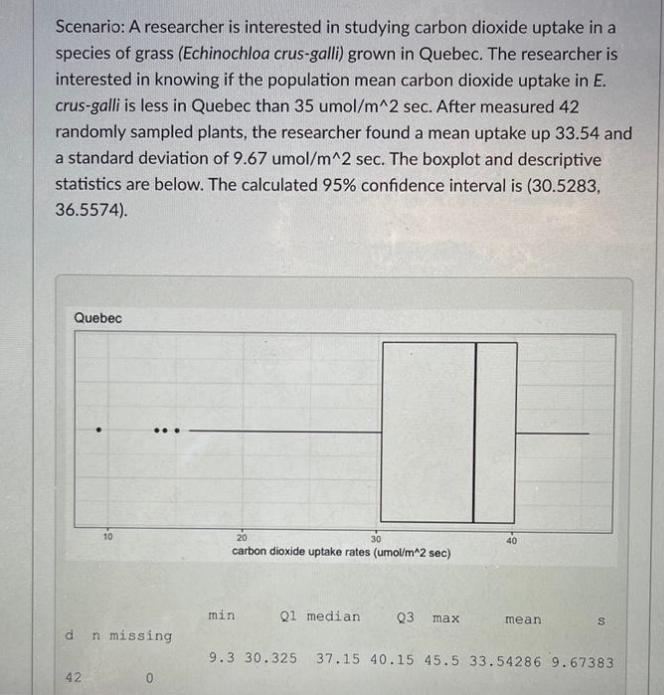Answered step by step
Verified Expert Solution
Question
1 Approved Answer
General conclusions allow us to make a holistic, overall assessment about the inferences we can make. Each general conclusion should (1) answer the research



General conclusions allow us to make a holistic, overall assessment about the inferences we can make. Each general conclusion should (1) answer the research question, (2) supply evidence and justify how it supports your answer with (a) a statement of certainty from an inference analysis and (b) a second piece of evidence, and then (3) give an overall assessment of the conclusions that can be made based on study design and/or any next steps. In more detail: Scenario: A researcher is interested in studying carbon dioxide uptake in a species of grass (Echinochloa crus-galli) grown in Quebec. The researcher is interested in knowing if the population mean carbon dioxide uptake in E. crus-galli is less in Quebec than 35 umol/m^2 sec. After measured 42 randomly sampled plants, the researcher found a mean uptake up 33.54 and a standard deviation of 9.67 umol/m^2 sec. The boxplot and descriptive statistics are below. The calculated 95% confidence interval is (30.5283, 36.5574). Quebec 10 d n missing 42 0 20 30 carbon dioxide uptake rates (umol/m^2 sec) min Q1 median Q3 max 40 mean S 9.3 30.325 37.15 40.15 45.5 33.54286 9.67383 What can you conclude, generally, about the carbon uptake of grass in Quebec?
Step by Step Solution
★★★★★
3.29 Rating (149 Votes )
There are 3 Steps involved in it
Step: 1
Understanding the absorption and processing of carbon dioxide in this plant species is the main goal ...
Get Instant Access to Expert-Tailored Solutions
See step-by-step solutions with expert insights and AI powered tools for academic success
Step: 2

Step: 3

Ace Your Homework with AI
Get the answers you need in no time with our AI-driven, step-by-step assistance
Get Started


